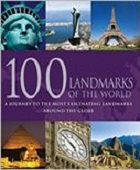

By Michael Petry
Thames & Hudson, $34.95, 208 pages
The Art of Not Making: The New Artist/Artisan Relationship presents a colorful collection of work representing more than 115 contemporary artists. At first glance, the pieces appear entirely unrelated to one another. Executed in a wide variety of materials including glass, metal, stone, and fabric, each work of art has a distinct look and purpose. Yet, all of these pieces share a major point of commonality; none of them were physically made by the artists credited with their creation.
Part glitzy coffee table book, part art history text, The Art of Not Making: The New Artist/Artisan Relationship explores the unique collaborative relationship between artists and craftsmen. Questions of originality, authorship, credit, and the meaning of the title “artist” are investigated through lush photographs, interviews, and art history segments. Although this book presents a range of perspectives regarding the issue of art as idea vs. art as product, readers who believe art is made with the hand as well as the mind may find this book frustrating.
Reviewed by Elizabeth Goss
[amazon asin=0500290261&text=Buy On Amazon&template=carousel]












